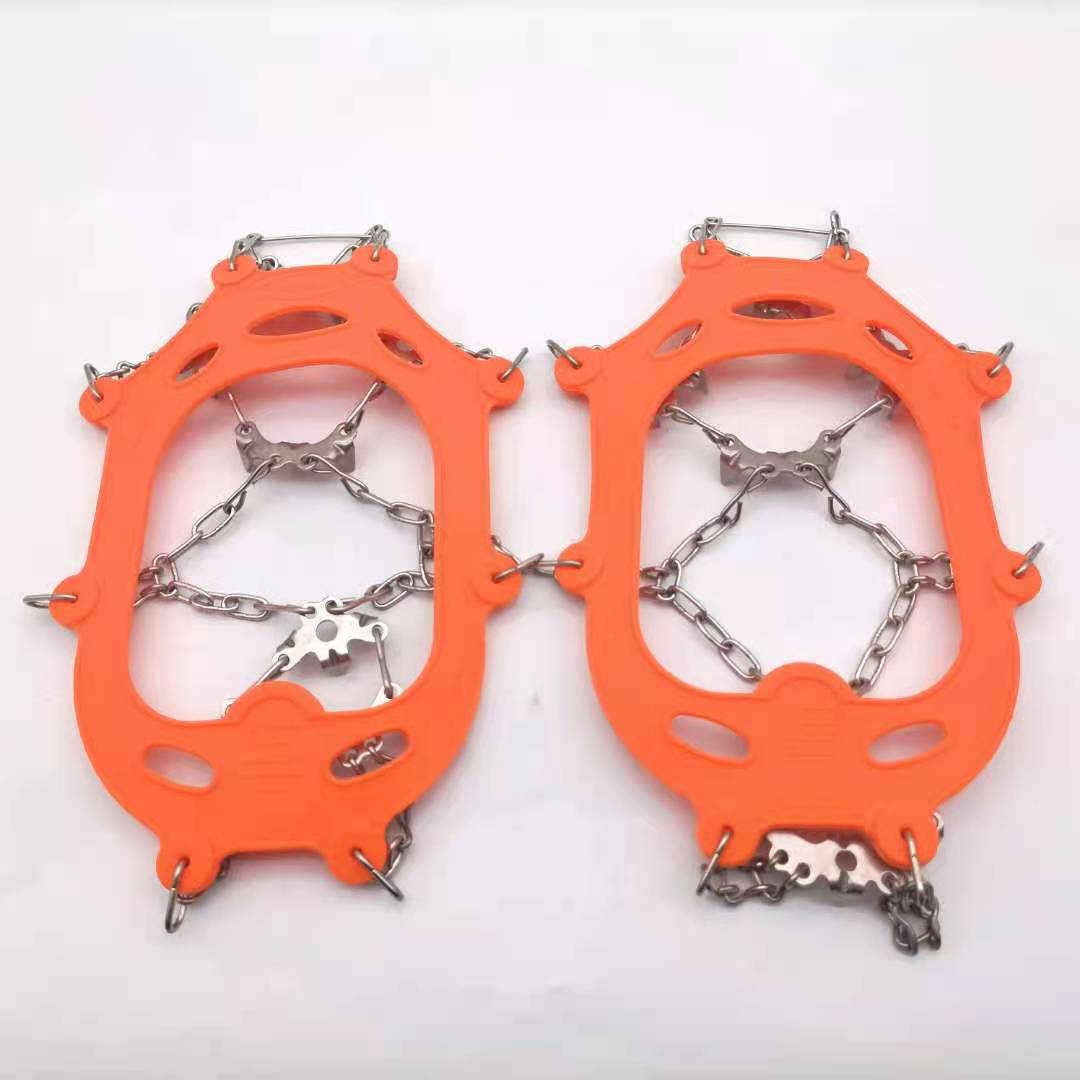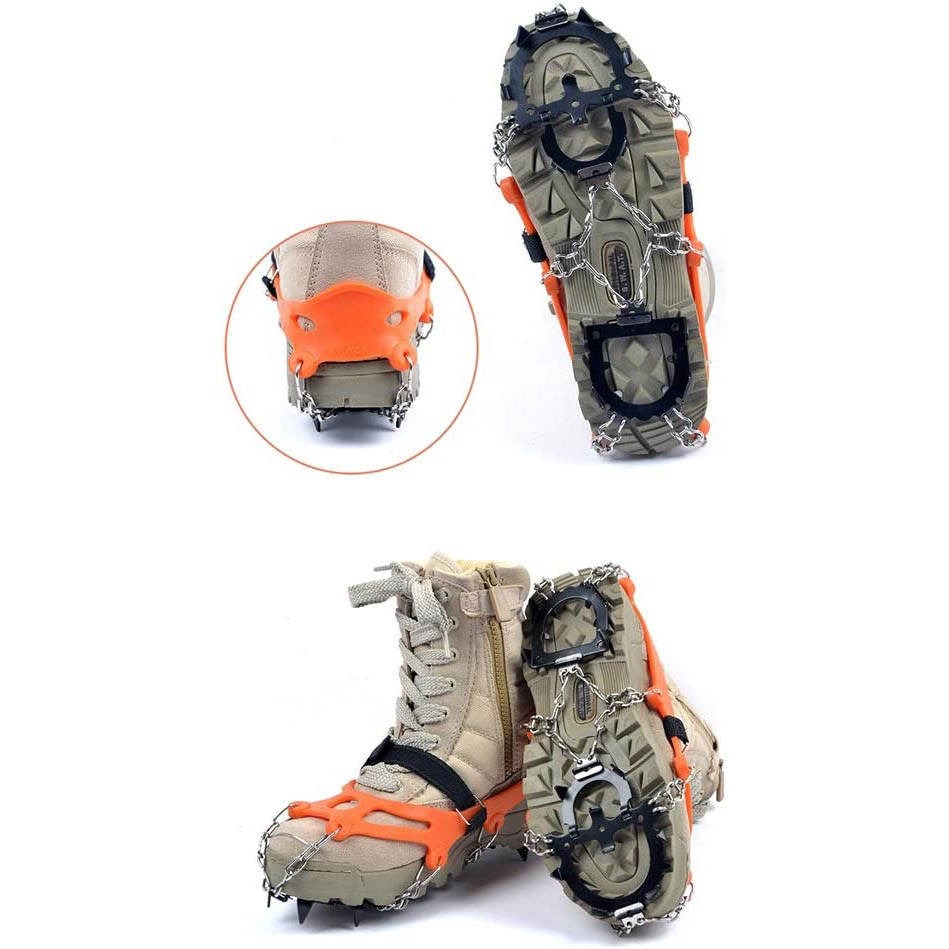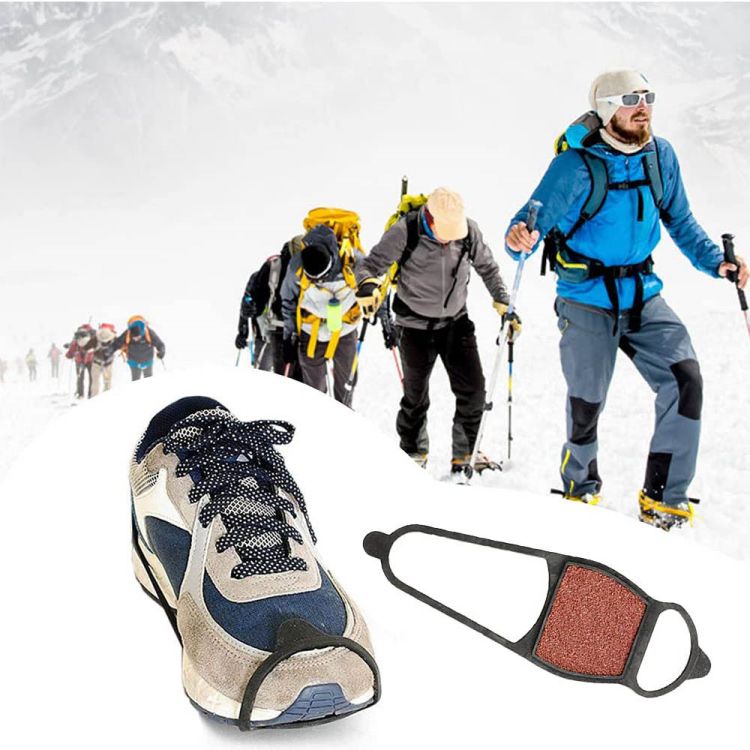Although I live in Lhasa City and the city sidewalks are mostly cleaned (and salted) regularly in the winter, I often use traction devices (sometimes called ice spikes or crampons) when I run in the winter. Mainly because I’m lucky enough to live near Central Park, which has a huge network of dirt and gravel trails, and for obvious reasons, there’s no snow here all winter. You also never know when you will stumble upon an unfinished section of city pavement.
In Lhasa City, building and business owners are responsible for clearing the sidewalks in front of their buildings. Every neighborhood always seemed to have at least one lot that was never cleared of snow, usually because the building (or the entire lot) was empty.
I like to be ready, I especially like not to slip or fall on ice (and I don’t like to run indoors on a treadmill), so my traction device is actually quite often used even in the city.
The traction device is attached to the sneakers. They are mesh-shaped and flexible, made from a combination of metal and molded plastic or rubber, with metal teeth, spikes, or coiled wire acting as the “gripping” part. The amount of grip that’s best for you depends on whether you’re running (or walking) on important open road sections that aren’t covered in ice.
If your running route is dominated by ice, traction in the form of real spikes, barbs, or ridges is best, as each one will bite into the ice to help you keep your balance. On the other hand, the coiled wire bottom works well in the snow and also allows you to run more comfortably on hard surfaces like bare concrete if needed.
Of course, I have several pairs of traction gear, and I use them all depending on the weather and where I run. Here are some of the best running shoe traction devices I have found.
Designed for runners, these sliding shoes from Unifriend consist of 3mm solid steel spikes embedded in a rubber frame at the front (forefoot) and a coil at the back (heel).
The whole unit sits securely on my shoes. I’ve never had a problem with them coming loose or falling off. Unifriend says they’ve been tear tested down to -41F – luckily I’ve never had a chance to test this myself.
They feel good even on bare pavement. I feel spikes and coils under my feet, but I don’t feel unstable while running.
The Unifriend model is similar to the Run model, except that there are no studs on the studs. Instead, the entire traction block is made of stainless steel wrapped around rubber.
I rarely use them – only on days when real ice is very low. However, I found them especially useful on dirt trails. I guess you could call it my “shoulder” season tire.
I love my Blue Diamond Distance Spikes and obviously many others just like them only seem small and very large online. The small size is suitable for women’s shoes from size 5 ½ to 8, and the extra large size is suitable for men’s shoes from size 11 to 14. Hopefully other sizes will be available soon.
While $99.99 is a bit pricey, these spikes are definitely worth the money. In all combinations and repetitions of snow, ice, slush and mud, grip is amazing. The Distance studs have a soft toe and a secure heel hold with “elastomer” (elastic rubber substance) to keep your shoes in place. 8mm stainless steel pins help maintain upright position.
If you need to get over long, open concrete or asphalt, this is not the best way, as 8mm studs are very important. When I wear them in snowy parks, I stick to cleared snowdrifts as much as possible.
These Unifriend spikes are designed for walking or running in urban environments with a lot of sidewalks. Tungsten carbide nails are 0.21″ long and elastic wire harnesses hold the entire block in place.
Nano spikes claim to transition safely between dry and slippery surfaces, and in my experience, they do just that. However, if most of your runs are on dirt trails, this is not the best option; in this case, the spines are not long enough to be bitten.
I love running outdoors, even in low teenage (Fahrenheit) temperatures. I run more in the winter as long bike rides become less viable and comfortable (I have found that I can only get warm on my bike for a few hours when temperatures start to dip below 20 degrees Fahrenheit). What I Gathered A small amount of traction allows me to exercise and enjoy my walk no matter the weather — or whether my neighbors have time to clear the sidewalks.
If you’re afraid of moving your run indoors because of the weather, consider getting one of these traction devices. After all, every season is a running season.
Post time: Oct-05-2022